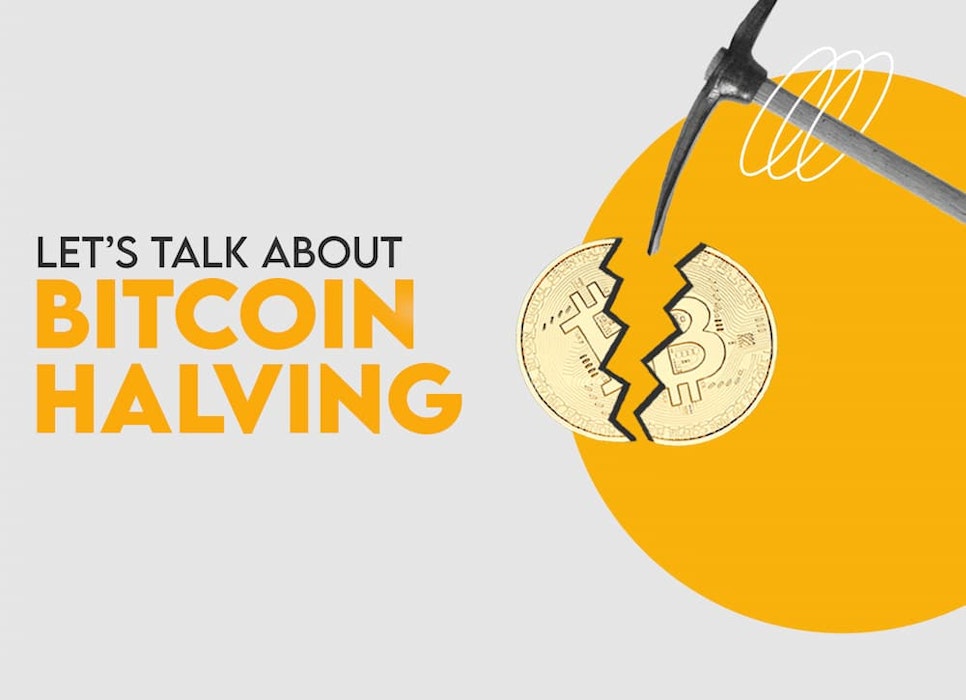The bitcoin halving is a scheduled event that occurs every 210,000 blocks (approximately every four years) on the Bitcoin blockchain to limit inflation and maintain the value of Bitcoin. The halving is very important in the crypto ecosystem; every time it happens, it is a topic that is everywhere. In this blog, we will explain in detail what the Bitcoin halving is, its history, why it is essential, the impact it has on the price of Bitcoin, and we will talk about those other cryptocurrencies being halved.
What is the Bitcoin halving?
Halving refers to the process where, as the name implies, the reward per Bitcoin block is reduced by half. On the Bitcoin blockchain, miners receive compensation for each block they mine. This reward motivates the miners to do the necessary work to maintain the Bitcoin network.
The halving happens every 210,000 blocks, which occurs approximately every four years.
Before the first Bitcoin halving in 2012, miners received 50 BTC per block. After the halving, the block reward was reduced to 25 BTC. The second halving was in 2016, and the reward per block went to 12.5 BTC; finally, the third halving was in 2020, and the current reward is 6.25 BTC.
Bitcoin Halving History
The Bitcoin halving occurred on November 28, 2012, and this event generated a lot of interest as it happened just after Bitcoin reached its first record price of $1,000.
The price of Bitcoin was relatively stable for the first two years after the Bitcoin halving but then began to rise rapidly in early 2016, followed by the second BTC halving on July 9, 2016. The second halving brought a significant increase in the price of Bitcoin; the price started to increase at the end of 2016 and peaked at $19,783 in December 2017.
After that, the price of Bitcoin began to decrease gradually until the third halving on May 11, 2020. A little over a year later, the cryptocurrency reached its all-time high of almost $70,000, only to decline again due to the so-called “bear market.” Within the crypto community, there is a lot of speculation as to whether the halving affects the price of Bitcoin in any way, but opinions are pretty divided for now.
Why is the halving important?
The halving is one mechanism controlling inflation in the Bitcoin blockchain. The idea behind the halving is to limit the new BTC introduced into the economy each year, which in turn limits inflation. While the halving occurs every four years, it is the only way that the amount of new Bitcoin delivered to miners can be limited. In contrast, fiat currencies like the US dollar have an annual inflation rate that can be much higher.
Furthermore, halving also plays a crucial role in the security of the Bitcoin network. Miners receive a reward for each block they mine; this reward motivates miners to do the work necessary to maintain the Bitcoin network. If the reward per block is too low, miners would have less incentive to maintain the network. Therefore the Bitcoin halving is essential to keep the network secure and stable.
Bitcoin Price Halving Opinions
Although Bitcoin halving has no direct effect on the price, there is much debate about how it affects the price in the long run. Some believe that the halving limits the supply of Bitcoin, which may cause the price to rise. This theory is based on the idea that if there is less Bitcoin available, buyers will have to pay more for it.
However, others think that the halving does not affect the price of Bitcoin in the long term. This theory is based on the idea that the cost of Bitcoin depends mainly on demand, which in turn depends on users and investors. If the demand is high, the price of Bitcoin will increase, regardless of the amount of Bitcoin available.
Are other cryptocurrencies being halved?
Bitcoin halving is very important to the cryptocurrency ecosystem, but some other cryptos are also halving. For example, Litecoin has a halving scheduled every 840,000 blocks (approximately every four years). After its last halving in August 2019, the block reward was reduced from 25 to 12.5 LTC.
Other cryptocurrencies scheduled for halving include Bitcoin Cash, Monero, and Zcash.
Since you know everything about the halving, you are surely wondering when the next one will be, the exact answer is complicated to know, but at the time of writing this, there are 73,811 blocks to be mined to reach the next halving. At this rate, we would be talking about the next big day for Bitcoin around the first days of May 2024.
If you believe that the halving affects the price of Bitcoin, you may be interested in buying some BTC now, waiting and looking forward to the next halving. We invite you to download El Dorado, where you can quickly and safely buy Bitcoin and other cryptocurrencies with your local currency.
Don't wait to hear about it; use El Dorado today!
